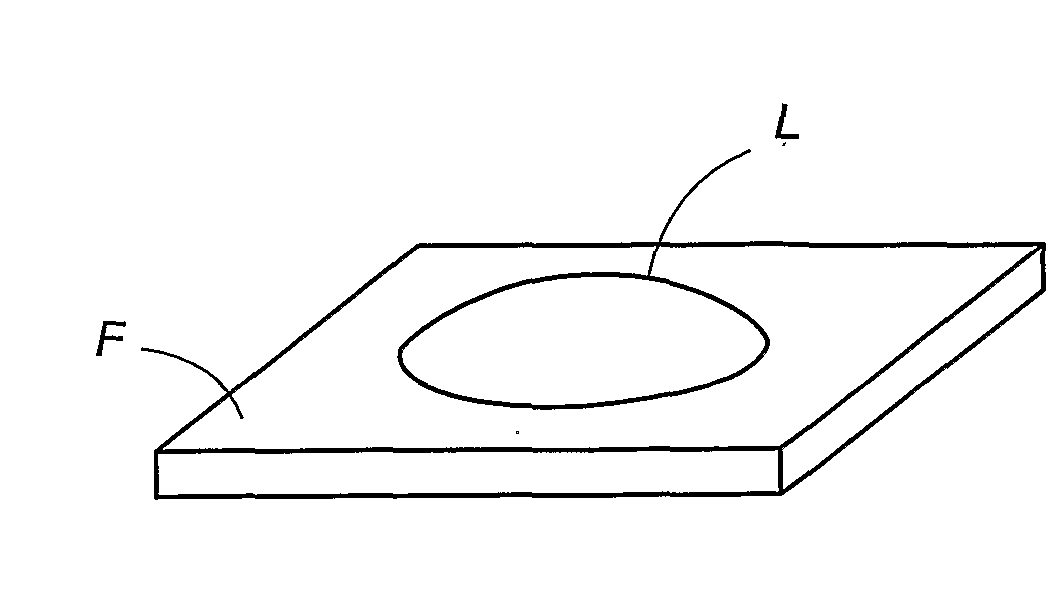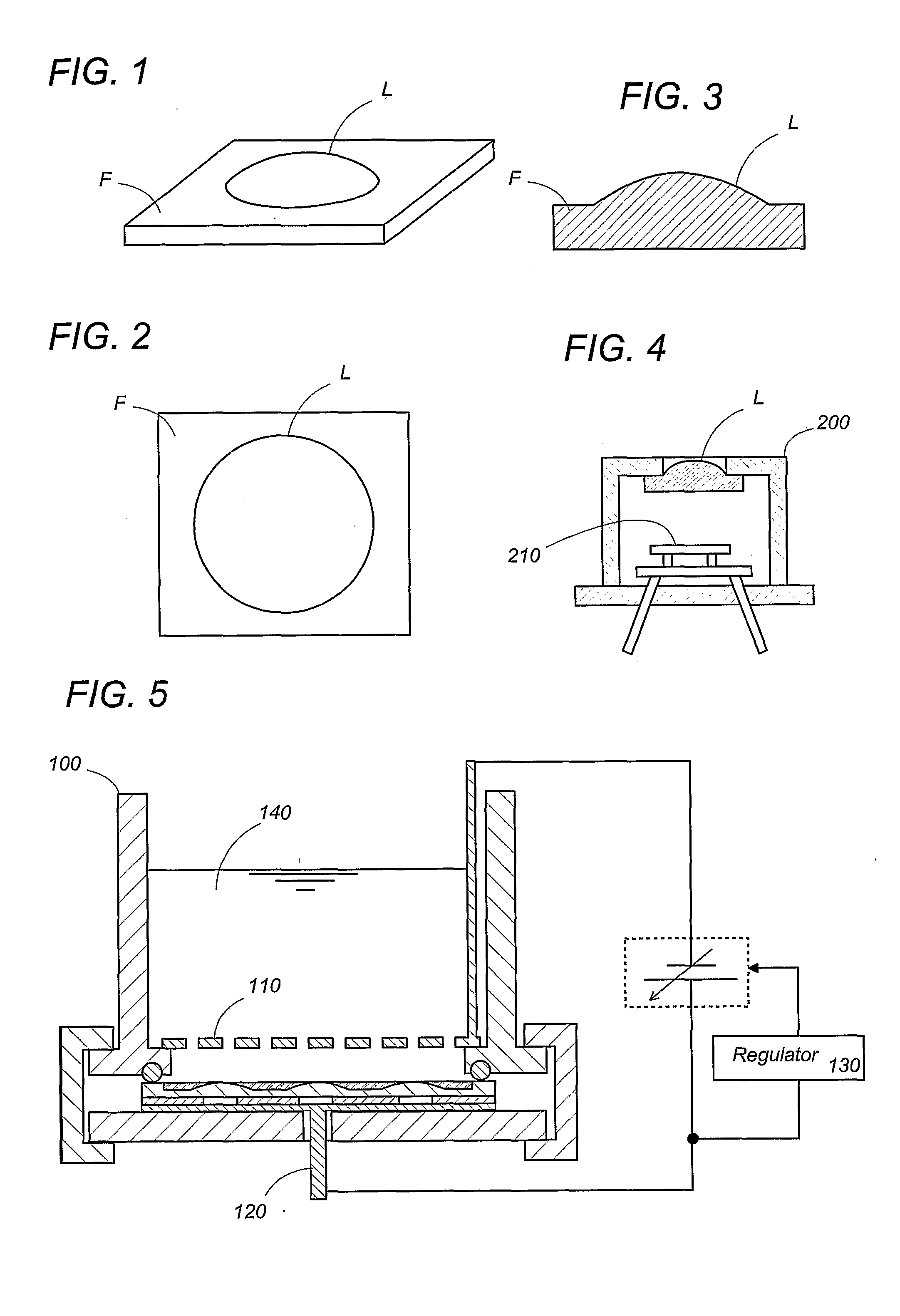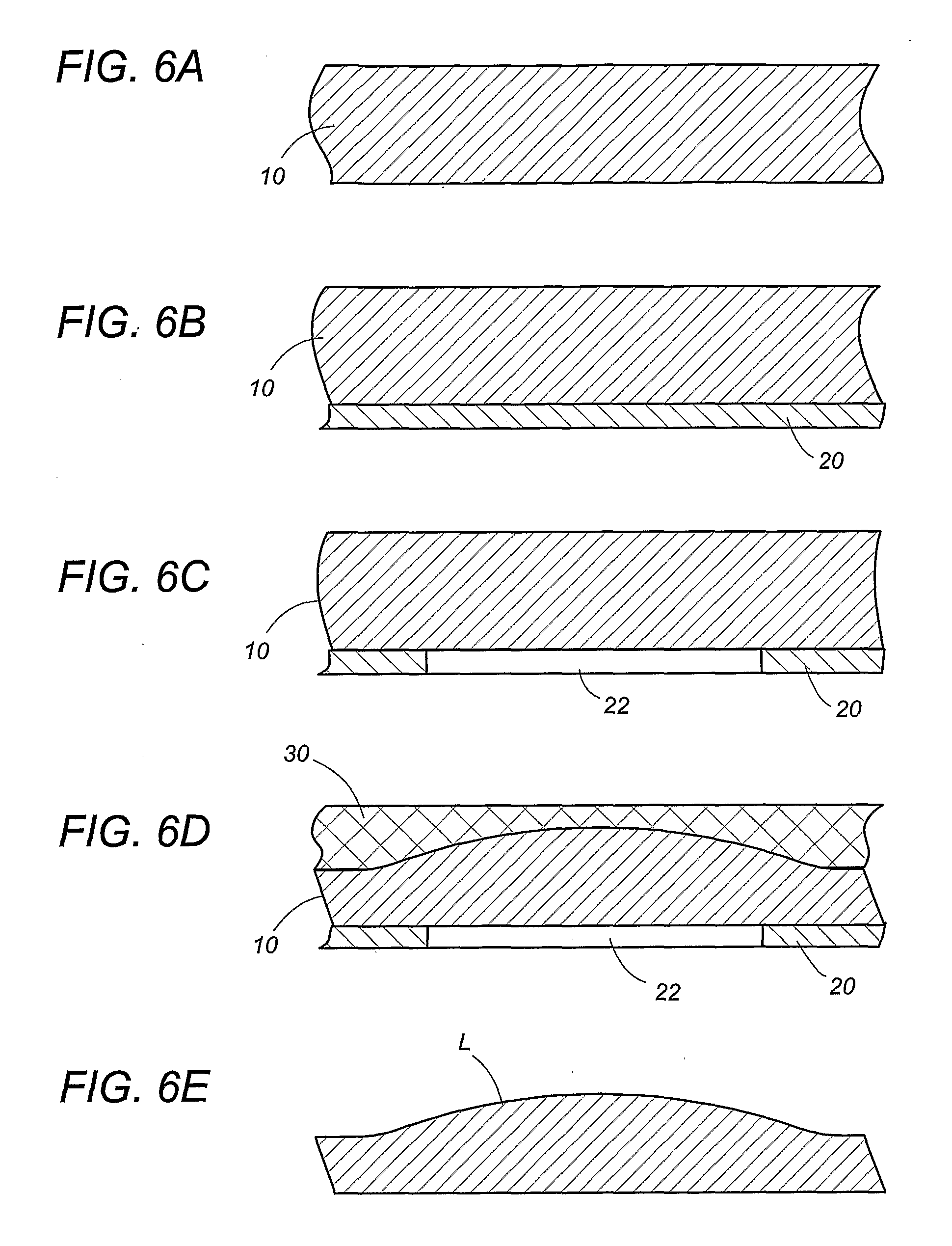Process Of Making An Optical Lens
- Summary
- Abstract
- Description
- Claims
- Application Information
AI Technical Summary
Benefits of technology
Problems solved by technology
Method used
Image
Examples
example
[0047]A 100 mm diameter p-type Si substrate 10 of 0.5 mm thick and 80 Ω·cm resistivity was formed on its bottom surface with a 1 μm thick aluminum conductive layer 20 by spattering. After sintering the conductive layer 20 at 420° C. for 20 minutes, the layer 20 was masked by photolithography with a resist pattern having a plurality of windows of 2 mm diameters. Then, the unmasked portion of the conductive layer 20 was etched out to form a plurality of 2 mm diameter openings in the conductive layer, as shown in FIG. 8. After being removed of the resist pattern, the substrate 10 was placed in the anodizing apparatus of FIG. 5 containing the electrolytic solution comprised of an 1:1 ratio mixture of a 50% aqueous solution of hydrogen fluoride (HF) and ethanol. Then, the substrate was anodized at current density of 30 mA / cm2 for 3 hours. The resulting porous layer 30 was found to have a 0.3 mm thick at the portion corresponding to the conductive layer 20 and to have a decreasing thickne...
second embodiment
[0049]FIGS. 11 and 12 illustrate the process of fabricating a plano-concave lens L in accordance with the second embodiment of the present invention. In the present invention, the semiconductor substrate 10 is formed on its bottom surface with an anode pattern composed of a plurality of circular anodes 20 in a pattern analogous to that shown in FIG. 8. For simplicity, only single anode 20 is shown in FIGS. 12A and 12B. Each anode 20 is responsible for forming a concave profile in the opposing top surface of the substrate 10 by anodization and by removal of the resulting porous layers 30 in the like manner as discussed with reference to the first embodiment. That is, during the anodizing process, the porous layer 30 develops in the top surface at a portion opposed to each anode 20 to have a depth which is greater towards the center of each electrode 20 than at the periphery thereof, as shown in FIG. 12B. Then, the porous layer 30 and the anode 20 are etched out to uncover the concave...
third embodiment
[0050]FIG. 13 illustrates the process of fabricating a double-convex lens L in accordance with the third embodiment of the present invention which is similar to the first embodiment except for inclusion of additional anodization process. Firstly, the substrate 10 is formed in its top surface with the convex profile through the steps as described in the first embodiment and as shown in FIGS. 13A to 13D. Then, an additional conductive layer 24 with a plurality of additional circular openings 26 is deposited on the top surface with each of the additional circular openings 26 being disposed in concentric with the already formed convex profile as shown in FIG. 13E, in which only one additional circular opening 26 is shown for simplicity. Subsequently, the substrate 10 is anodized to develop an additional porous layer 34 in the bottom surface of the substrate 10, as shown in FIG. 13F. The additional porous layer 34 is etched out together with the additional conductive layer 24 to obtain t...
PUM
| Property | Measurement | Unit |
|---|---|---|
| Dielectric polarization enthalpy | aaaaa | aaaaa |
| Electrical conductivity | aaaaa | aaaaa |
| Electrical resistance | aaaaa | aaaaa |
Abstract
Description
Claims
Application Information
 Login to View More
Login to View More - R&D
- Intellectual Property
- Life Sciences
- Materials
- Tech Scout
- Unparalleled Data Quality
- Higher Quality Content
- 60% Fewer Hallucinations
Browse by: Latest US Patents, China's latest patents, Technical Efficacy Thesaurus, Application Domain, Technology Topic, Popular Technical Reports.
© 2025 PatSnap. All rights reserved.Legal|Privacy policy|Modern Slavery Act Transparency Statement|Sitemap|About US| Contact US: help@patsnap.com



